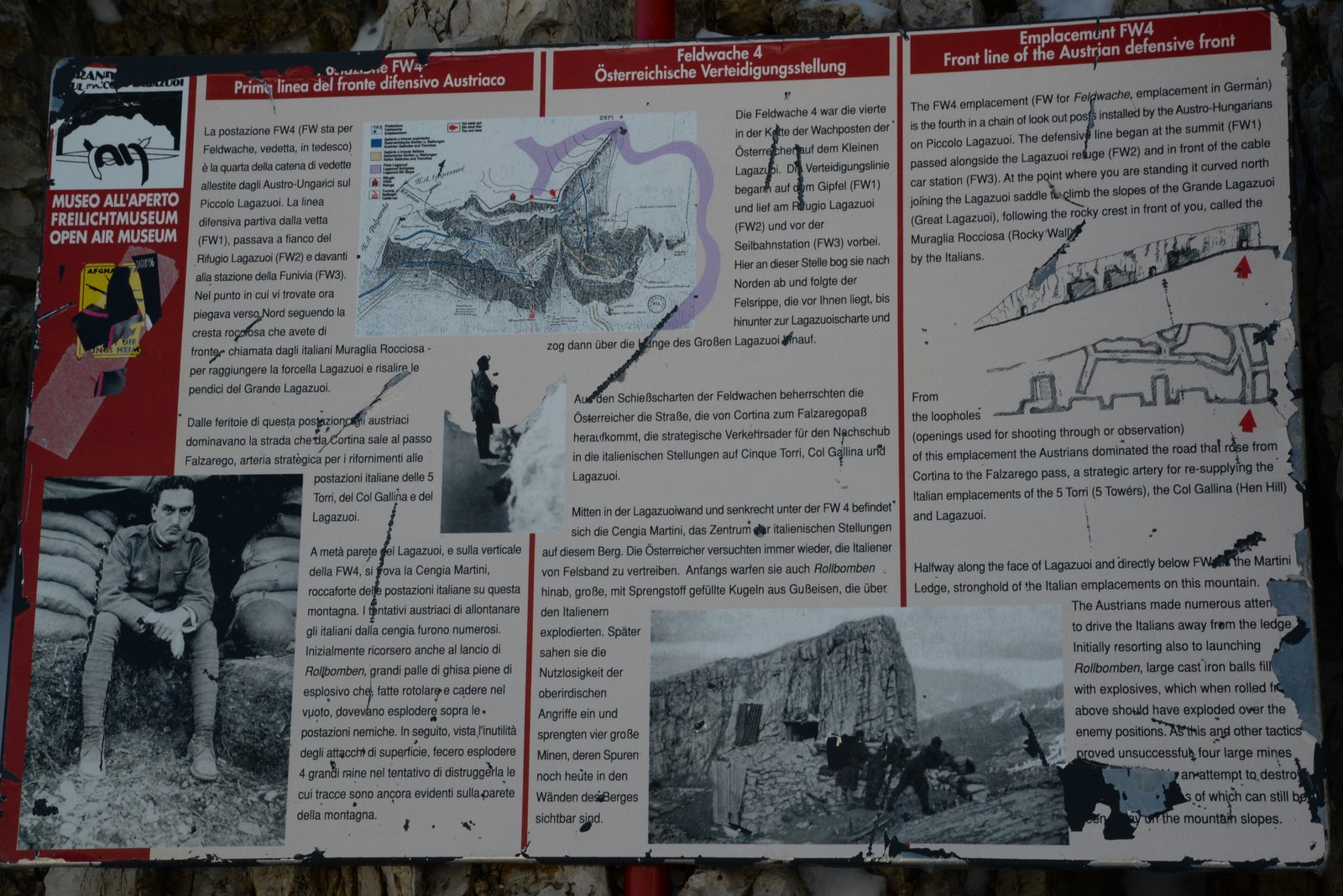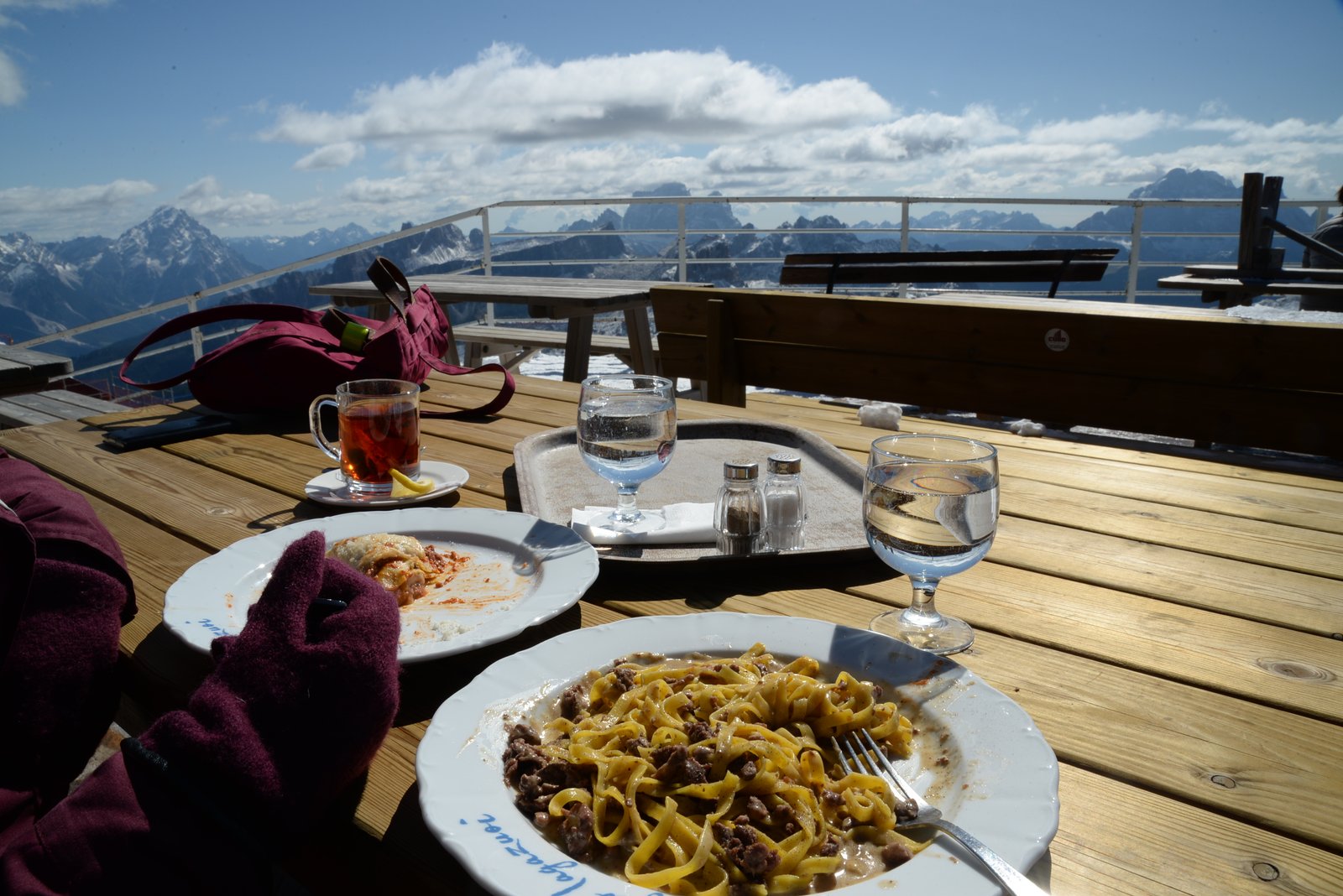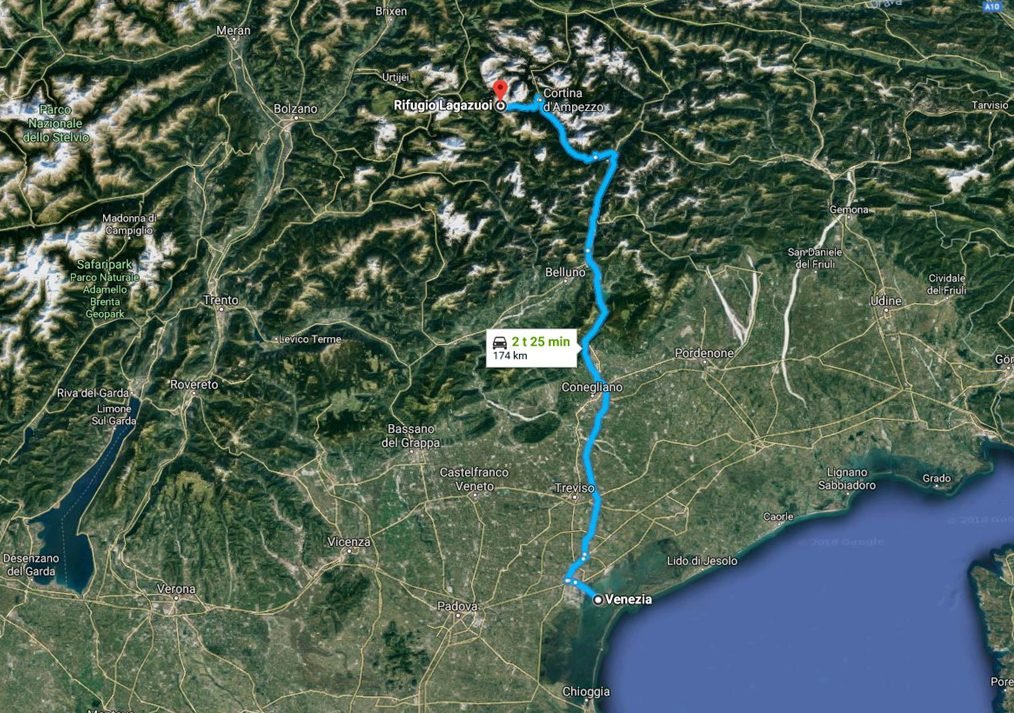Süd-Tirol is where good apples come from. Anyone who has eaten apples know the name, and probably thinks Süd-Tirol is in Austria or Germany. But Süd-Tirol is the very northernmost part of Italy, and called Alto Adige in Italian, as part of the province Trentino-Alto Adige. Both Italian and German are official languages, together with the local language Ladinian. The story of why, is also the story of the Dolomites’ role in World War I.
Mountains are often border areas. The high, cold mountains literally constitute walls between people and between countries. Crossing them was dangerous. In the Alps, the borders between countries follow the high peaks.
But the Alps has many high peaks to choose among when laying out a border. Since deep in medieval time, the area comprising Süd-Tirol belonged to the Austro-Hungarian empire and its precursors. The language was mainly German. Then came WWI.
In 1915, the Allies promised Italy to have Süd-Tirol as the prize, if the entered the war on their side, against Germany and Austria. When WWI was over, Italy got it.
Benito Mussolini and the fascists came to power in 1922 started to make it Italian. The German heritage was suppressed, Italian became the only official language, in public and in school. In 1938, Mussolini and Hitler even agreed to move the German-speaking population by force; to Germany, or to disperse and assimilate them around Italy. Due to the outbreak of the WWII, “only” a few thousand were actually forced to move, but after the war they faced steep political hurdles to return to their homeland.
After WWII, Italy and Austria agreed that Trentino and Alto Adige would still be Italian, but that German and Italian would be equal, official languages. Practice was more difficult and strained the Italian-Austrian relationship for many years, and even fueled bomb attacks by separatists. It was not until 1971, when a new agreement between the two countries granted the provinces even more autonomy, that Austria felt satisfied and the separatists also ceded attacks.
Today, Alto Adige is an eclectic mix of Austrian and Italian, a place with typical Alpen building style, the culinary mix of pizza, gelato, Speck und Strudel, and where only the added Italian language in signs shows which side of the border you are on. Austria joined the EU in 1995, which made the actual border less significant.
The better half and me drove to Sillian, the first town on the Austrian side, to tick off Austria on the been-there-list. I hoped to show off my German language skillz, but outside the tourist season, the only decent place to have lunch in Alpen-pretty little Sillian was an Italian restaurant. Where they only spoke Italian. Luckily, Sillian also had a nice Bäckerei and chocolaterie, where they spoke the characteristic singing Austrian-German.
But, back to the Dolomites themselves, and up in the mountains. To the front line of WWI. Absurdly, the front line in the world often went high up in the mountains themselves, even in steep mountain sides. One of these was on the Lagazuoi mountain, northwest of Cortina.
Lagazuoi, like many mountains on the Dolomites, towers above the valley, with a nearly thousand meters tall cliff. A cable car ascends the cliff in two minutes, to the Rifugio Lagazuio, a tourist hut sitting like an eagle’s nest on the cliff edge.
The mountain itself is holed out like a Swiss cheese, by tunnels dug by both sides in the WWI. The mountain became a fortress, both shelter and a position to aim at the enemy. The adversaries even dug tunnels to destroy each other’s tunnels, a hide and seek inside the mountains to place bombs to destroy the dwellings of the enemy.
During the winter, survival in the mountains was as tough a battle as the war itself. The soldiers even dug caves into glaciers for accommodation.
Many men lost their lives in battles on and around Lagazuoi. Today, their memory is kept by a cross on the peak next to the cabin. The cross is made of remnants of steel from the fortress works, and it includes the shell of an unexploded bomb.
In contrast to the cliff at the south side, the north side of Lagazuoi dips gently to the north. So it is because the dolomite layers have been tilted gently, and the paths around the cabin, and towards the north, follow the layers. The dolomite layers create steps that make Lagazuoi look like a series of pavements.
Lagazuoi is a great illustration of how the type of rock decides mountain topography. The layering of the dolomite often creates flat or dipping mountain tops, while the many vertical fractures in each dolomite layer are perfect starts for making steep cliff sides.
Today, Lagazuoi is one of many Eagles’ nests, which can be reached by tourists. It is popular not only as a starting point for mountain trips, but also for enjoying a meal with an astonishing view. In this land of two languages, we had the local specialty pasta with wild boar for main course – and Apfelstrudel for dessert.
Sadly, we had to leave to reach Verona, and could not stay for the probably mightiest experience of them all: Sauna on the cliff side, and then watching the stars twinkle above the mighty, pink Dolomites.
How to get there
The fastest way to get to the Dolomites is to fly to Venice, and drive straight northwards on the Autostrada (toll road). The drive is around two hours from Venice airport to Cortina. Alternatives are to fly to Verona, or to Innsbruck in Austria.
Lagazuoi is a half an hour drive on the SR48 west from Cortina. The road is winding, and take care in cold weather!








